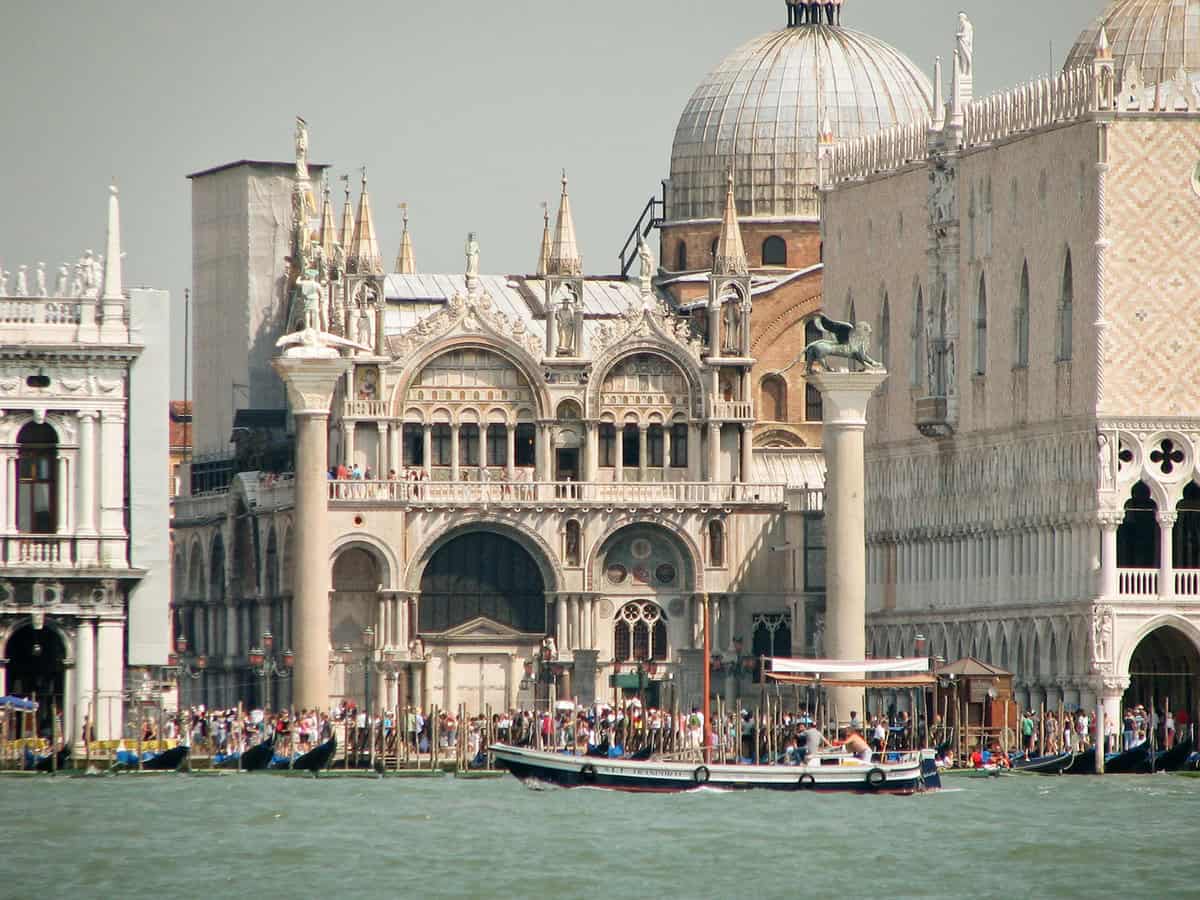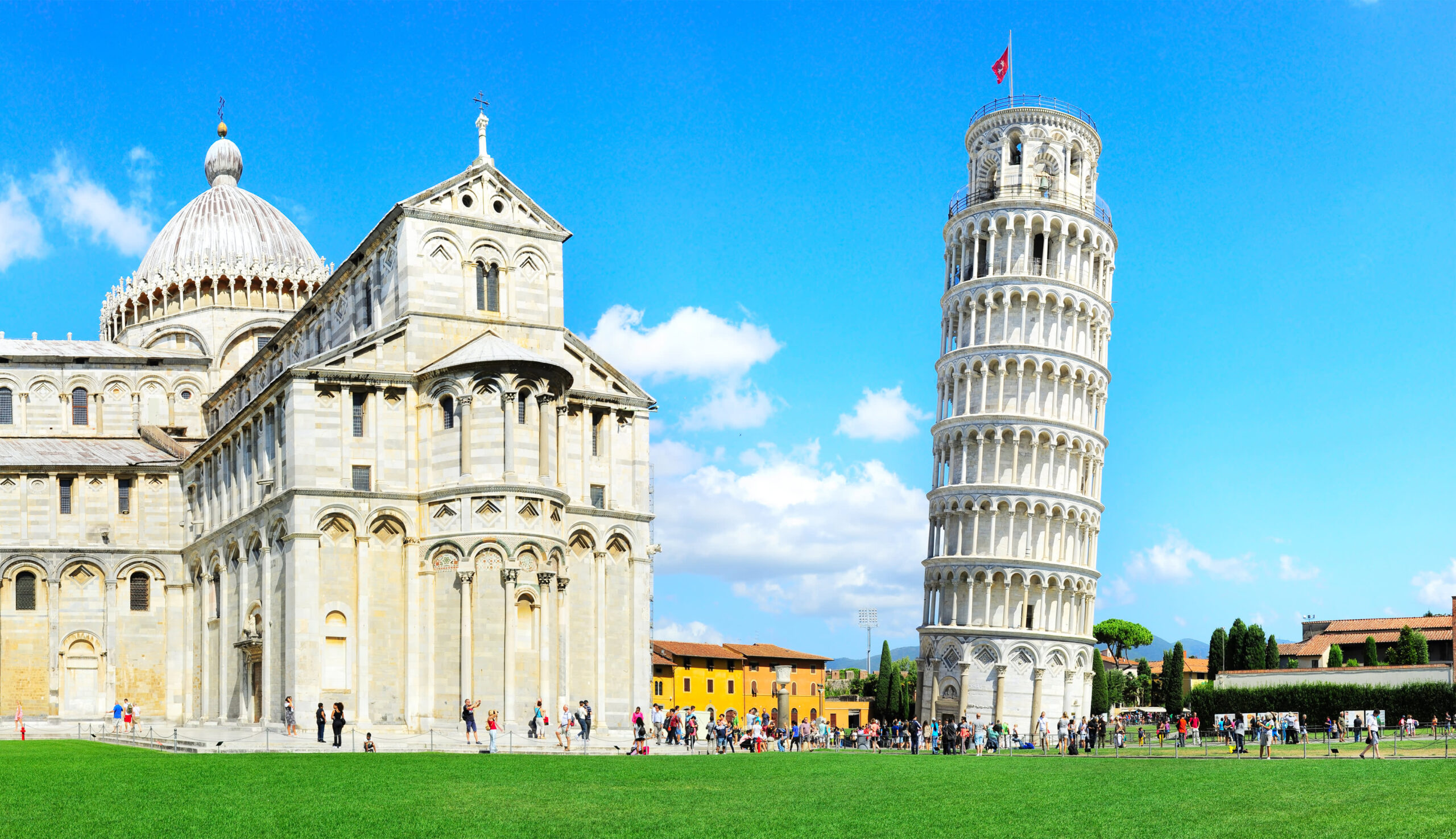
Introduction
Overview of Italy‘s Architectural Landmarks
Italy is a treasure trove of architectural wonders, each telling a unique story of its past. From ancient Roman masterpieces to stunning Gothic cathedrals, these landmarks reflect a rich tapestry of <a href="https://ariatravels.com/mansoura-marvels-exploring-the-rich-history-and-culture/”>history and culture.
- Diverse Styles: Highlights include classical, Renaissance, and Baroque architecture.
- Cultural Significance: Each structure embodies the artistry and innovation of its time.
Walking through cities like Rome, Florence, and Venice feels like stepping back in time, where every corner reveals a captivating piece of history just waiting to be explored.
The Colosseum, Rome
History and Significance
The Colosseum, an iconic symbol of Rome, has stood since 70-80 AD, witnessing centuries of history. It served as a grand amphitheater for gladiatorial contests and public spectacles, highlighting the Roman Empire‘s power and societal values.
- Cultural Hub: At its height, the Colosseum hosted up to 50,000 spectators.
- Enduring Symbol: It represents Roman architectural ingenuity and is a UNESCO World Heritage site.
Walking through the Colosseum, one can almost hear the roar of the crowd and see the glint of swords clashing in the arena.
Architectural Features
This architectural marvel boasts an elliptical shape and measures 189 meters long and 156 meters wide, showcasing the Romans’ advanced engineering skills.
- Materials Used: Constructed primarily from travertine stone, concrete, and tuff.
- Innovative Design: The use of arches and vaults allowed for a robust structure that has withstood the test of time.
As visitors gaze at its massive stone arches and intricate details, it’s awe-inspiring to think about the ancient techniques utilized to make such a colossal venue come to life.
The Leaning Tower of Pisa
Design and Construction
The Leaning Tower of Pisa, with its distinctive tilt, was constructed between the 12th and 14th centuries. Originally intended as a bell tower for the nearby cathedral, its design reflects Romanesque architecture, characterized by its impressive arches and intricate marble façade.
- Architectural Style: The tower is a stunning example of Romanesque design, featuring:
- Eight stories, including the chamber for the bells.
- A spiral staircase with 293 steps leading to the top.
As one strolls around the base, the incredible craftsmanship becomes evident, showcasing the ambition of its builders despite the challenges they faced.
Current Restoration Efforts
Today, the Leaning Tower of Pisa continues to draw visitors, but efforts to maintain its stability have been ongoing. Engineers have implemented various restoration strategies to ensure its preservation.
- Monitoring Systems: Advanced technology is used to monitor the tower’s stability and movement.
- Reinforcement Projects: Recent restoration efforts include:
- Removal of soil beneath the tower to lessen pressure.
- Adding counterweights to stabilize it further.
Walking beside this iconic structure reminds visitors that even monumental feats of architecture require careful stewardship to endure through the ages.
The Duomo, Florence
Architectural Style and Influences
The Duomo, or the Cathedral of Santa Maria del Fiore, stands as a testament to Florence’s artistic heritage. Completed in the 15th century, it embodies the grandeur of Renaissance architecture, inspired by classical elements while embracing innovative design.
- Key Features:
- The stunning octagonal dome, designed by Filippo Brunelleschi, remains an engineering marvel.
- The façade combines gothic and renaissance styles with detailed marble work.
Roaming the streets of Florence, one cannot help but feel a sense of awe as the Duomo dominates the skyline, inviting visitors to experience its historical significance.
Art and Design Elements
The Duomo is not just a marvel of architecture; it’s also a gallery of artistic masterpieces. From mosaics to frescoes, every corner tells a story.
- Interior Highlights:
- The main altar adorned with exquisite artworks.
- The dome’s interior, featuring a vibrant fresco by Giorgio Vasari.
As one gazes up into the dome’s intricate details, it feels as if time stands still—each brushstroke echoing the creativity and dedication of its artists, encapsulating the essence of Florence’s cultural legacy.
The Pantheon, Rome
Unique Architectural Features
The Pantheon, an architectural marvel, boasts a breathtaking dome with a central oculus that opens to the sky. Completed around AD 126, it showcases the ingenuity of Roman engineering, employing a perfect hemispherical design that still captivates visitors.
- Rotunda and Dome Dimensions:
- The dome spans an impressive 43.3 meters in diameter, equal to its height.
- The oculus, measuring 9 meters, serves as the only source of natural light.
As visitors step inside, the interplay of light and shadow creates an ethereal atmosphere, leaving one in awe of the ancient builders’ mastery.
Historical Importance
The Pantheon, initially built as a temple for Roman gods, has transcended its original purpose, now serving as a Christian church since the 7th century. This enduring adaptability speaks to its significance throughout history.
- Cultural Significance:
- The site symbolizes the blend of ancient Roman and Christian traditions.
- It houses the tombs of notable figures, including the painter Raphael.
Walking through the grand entrance, one can feel the weight of history upon their shoulders, a reminder of Rome’s enduring legacy as a cradle of civilization and architectural brilliance.
The Trevi Fountain, Rome
Symbolism and Design
The Trevi Fountain is not just a stunning piece of Baroque architecture; it is rich with symbolism. Completed in 1762, it serves as a tribute to the bounty of nature and the importance of water in Roman life.
- Key Elements:
- The central figure of Oceanus, representing the sea, symbolizes the power of water.
- Surrounding sculptures portray various allegorical figures, such as Abundance and Health.
Standing by the fountain, watching coins swirl in water, visitors can’t help but feel a deep connection to the age-old tradition of tossing a coin for good luck—a ritual that promises a return to this enchanting city.
Renovation and Maintenance
Maintaining the grandeur of the Trevi Fountain is essential, given its historical significance and popularity. Recent restoration efforts have focused on preserving its stunning details while ensuring sustainability.
- Restoration Initiatives:
- The most extensive restoration was completed in 2015, funded by fashion house Fendi, totaling around €2.2 million.
- Regular cleaning and upkeep are performed to prevent degradation from environmental factors.
As visitors admire its intricate sculptures and flowing water, they can appreciate that behind its beauty lies a commitment to preservation, ensuring the Trevi Fountain remains a beloved centerpiece in the heart of Rome for generations to come.
The Rialto Bridge, Venice
Engineering Marvel
The Rialto Bridge, spanning the Grand Canal, is an iconic symbol of Venice and a stunning feat of engineering. Completed in 1591, it showcases a unique design that combines both functionality and aesthetics, serving as a crucial link between the bustling market area and the city.
- Structural Highlights:
- The bridge is made of Istrian stone, offering durability and resistance to water damage.
- Its distinctive arch shape helps distribute weight evenly, allowing for pedestrian traffic above the grand canal below.
Walking across the bridge, one can feel the vibrations of history beneath their feet, as merchants and travelers have crossed its path for centuries, all while enjoying breathtaking views of the water.
Cultural Significance
The Rialto Bridge is more than just a crossing point; it is woven into the cultural fabric of Venice. It has been a gathering place for locals and tourists alike, fostering commerce and social connection.
- Local Importance:
- Home to numerous shops and market stalls, the bridge is often seen as the heart of Venice’s commercial life.
- Multi-generational traditions, such as gondola rides and local festivals, revolve around the bridge.
Standing on the Rialto Bridge, one can feel the pulse of Venetian life—an invitation to immerse oneself in the sounds, sights, and flavors of this enchanting city that continues to inspire both admiration and wonder.
The Milan Cathedral
Gothic Architecture Details
The Milan Cathedral, or Duomo di Milano, is a stunning example of Gothic architecture, captivating all who visit. Begun in the late 14th century, it took nearly six centuries to complete, making it a testament to enduring artistry and craftsmanship.
- Remarkable Features:
- Over 3,400 statues adorn its façade, each one telling a unique story.
- Spires dominate the skyline, with the highest reaching 108.5 meters, showcasing intricate details that are mesmerizing from every angle.
As visitors stand before this colossal structure, they are enveloped in a sense of awe, overwhelmed by its grandeur and the meticulous attention to detail that has gone into every carved figure.
Roof Terrace and Views
One of the most unforgettable experiences at the Milan Cathedral is exploring the roof terrace, where panoramic views of the city unfold. Accessed by both stairs and elevator, the rooftop offers an exhilarating perspective of this architectural marvel.
- Terrace Highlights:
- Visitors can walk among the cathedral’s spires, marveling at the craftsmanship up close.
- The terrace provides breathtaking views of Milan, including the nearby La Scala opera house and the historic city center.
Standing atop the roof, it’s easy to lose track of time, completely captivated by Milan’s urban charm, while the fresh air and stunning scenery create a perfect backdrop for unforgettable memories.
The Castel del Monte, Apulia
Architectural Mystery and Design
Castel del Monte, a UNESCO World Heritage site, stands as an enigmatic masterpiece overlooking the picturesque Apulian countryside. Constructed in the 13th century under Emperor Frederick II, its octagonal shape and blend of architectural styles spark curiosity and debate among historians and architects alike.
- Unique Features:
- The fortress has eight octagonal towers that rise dramatically, each uniquely designed.
- Its geometric precision reflects a synthesis of Islamic, Gothic, and Romanesque influences, showcasing a forward-thinking design.
As one strolls around the castle, the harmony of shapes and forms evokes a sense of wonder, leading visitors to ponder the intentions behind its design.
Historical Context
Castel del Monte was more than a defensive structure; it served as a cultural hub during its time, reflecting the sophistication of the court of Frederick II—a ruler known for his intellectual interests and the promotion of art and science.
- Cultural Significance:
- The castle functioned as a royal residence and a site for gatherings, symbolizing the power and influence of the Holy Roman Empire.
- It played a role in the cultural exchanges between various Mediterranean civilizations at the height of the Middle Ages.
Visiting Castel del Monte immerses one in a rich tapestry of history and culture, where past and present intertwine, igniting the imagination and inviting exploration of Italy’s multifaceted heritage.
Conclusion
Impact and Legacy of Italy’s Architectural Landmarks
Italy’s architectural landmarks are more than mere structures; they are living narratives of the country’s history, culture, and artistry. Each monument, from the grandeur of the Colosseum to the elegance of the Duomo, contributes profoundly to Italy’s identity and has inspired architects worldwide.
- Cultural Heritage:
- These landmarks attract millions, contributing significantly to local economies.
- They serve as symbols of resilience, reflecting Italy’s ability to preserve its history amid modern challenges.
Witnessing these incredible sites firsthand allows visitors to appreciate the depth of Italy’s architectural narrative and the stories embedded within each stone.
Recommendations for Visitors
To fully experience and appreciate Italy’s architectural splendor, here are a few suggestions:
- Plan Ahead: Reserve tickets online to avoid long queues, especially for popular sites like the Colosseum and the Duomo.
- Guided Tours: Consider joining a guided tour for deeper insights into the history and significance of each landmark.
- Explore Off-Peak: Visit during the shoulder seasons (spring and fall) for fewer crowds and better weather.
By embracing these recommendations, travelers can enrich their journey through Italy, creating lasting memories while marveling at the extraordinary architectural wonders that have shaped its cities for centuries.
